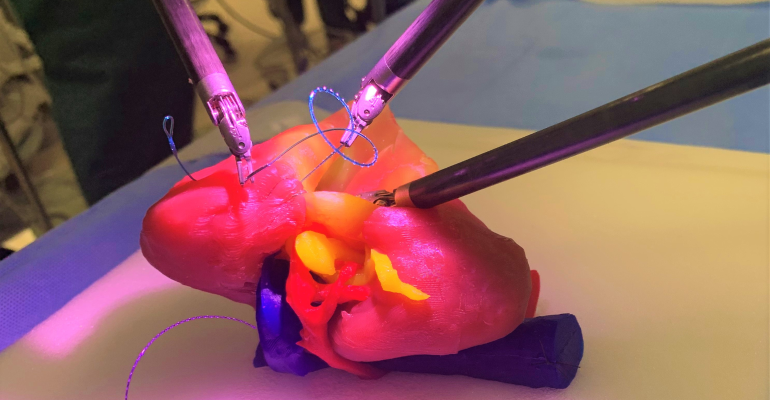On a shuttle ride from work, Dr. Jacques and Dr. Smriti Zaneveld found themselves in the company of medical residents and students engaged in a discussion about acquiring practical experience, particularly in complex surgical skills through patient operations. With an ongoing PhD in human genetics, their curiosity led them to uncover a remarkable and relatively unknown fact that the surgeon’s role is pivotal in driving over 90 per cent of key outcome metrics for numerous procedures. As a result, Lazarus 3D was born.
According to Founder and CEO Dr. Jacques, critical factors such as cancer recurrence, hospital stay duration and readmission rates primarily rely on the surgeon, their expertise, team and preparedness, compared to the technologies employed, which contribute only around 10 per cent to the overall outcomes.
“Looking at some of the challenges faced by these students, we thought of building an exact replica of a patient with a complex surgery profile. For example, if a patient has a brain tumour, we could build a similar structure of the brain and tumour, complete with the skull and blood vessels, to give surgeons a chance to rehearse on in a mock operation,” he said.

This led to the emergence of Lazarus 3D’s breakthrough tissue-mimicking models. Its patented PRE-operative SUrgical REhearsal (PRE-SURE®) technology offers a transformative approach to surgical training and optimisation. By closely imitating real tissue properties and allowing surgeons to simulate procedures, these models enhance surgical training, optimise approaches, and ultimately benefit patients.
“The hypothesis was if we could be successful with this model, surgeries would be more seamless, efficient, and safer,” he added. Drs. Zaneveld started their company
in a kitchen where they built their first 3D printer, but years of development and iteration later, they were able to develop a technology that allowed them to rapidly create prototypes of new materials that behaved like real tissue. “Now, when you cut into a Lazarus model, you can make a cut that will bleed and can be sutured. The same tools and techniques can be used when treating a patient,” he explained.
Regulatory milestones and market expansion
Lazarus 3D received an FDA clearance five years after its inception, which was a significant milestone for the company. This achievement helped introduce their innovative technology to the US market in 2022. Their advancements in surgical simulation also garnered recognition, including appearances at global healthcare events such as Innov8, which takes place every year as part of the Arab Health exhibition in Dubai. This not only helped raise awareness of their technology but also shed light on the potential benefits it holds for patients beyond borders.
“The Innov8 competition was pivotal in building our awareness of how this technology could potentially be used to benefit patients in the UAE. We received clearance in the US for the treatment of various genitourinary conditions, such as kidney cancer. However, it is important to note that our technology has not yet been approved for human use in the UAE at this time. We are actively working towards obtaining clearances for additional indications and expanding the scope of our approvals,” he said.
Forging partnerships and expanding horizons
Lazarus 3D’s recent partnership with Abu Dhabi Ports Group marks an exciting chapter in its journey. Through this collaboration, they will be able to provide their revolutionary Pre-Sure models in the UAE after regulatory approvals. The prospect of bringing their cutting-edge technology to the region reflects their commitment to improving patient outcomes and elevating surgical practices. “Looking ahead, we seek collaboration with pioneering surgeons who are eager to embrace cutting-edge technologies. We understand that, like any new product, there is a continuous learning process involved, and we are committed to iterating and enhancing our offerings. During this initial launch phase, we are particularly interested in partnering with top-tier professionals who share our excitement for new technology and are willing to explore its clinical advantages. We are focused on delivering optimal value and, in the future, plan to expand our collaborations further,” he concluded.
This article appears in Omnia Health magazine. Read the full issue online today
Back to Technology

